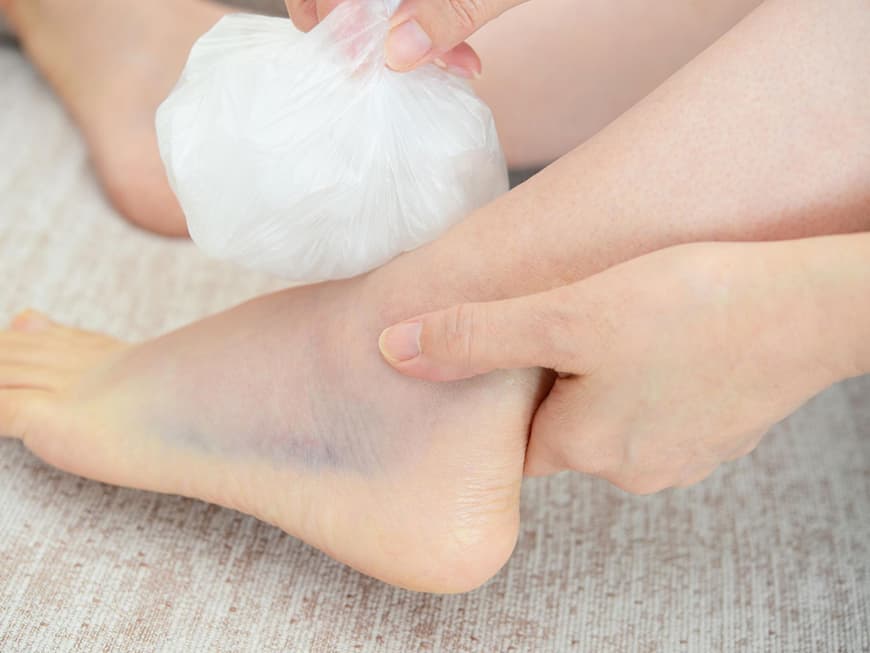
Accident help to prevent hematomas
We often don't even realize what triggers small bruises. Once the hematoma is there, we may remember that we bumped into the edge of the table a while ago. Thumb-sized bruises do not necessarily need to be treated. However, in the case of larger bruises such as sports accidents, it makes sense to take first aid measures so that the hematoma does not become too large and too painful. The PECH rule then applies: rest, ice, compression, elevation.
PECH rule
The PECH rule is made up of the first letters of the terms rest, ice, compression and elevation. First, the affected body part should be immobilized - sit down or keep your arm still. Cooling is then important. Apply ice or a gel pack. The cold causes the injured vessel to contract. To avoid damaging the skin, protect it from direct contact with a cloth. After cooling for about ten minutes, you can apply a compression bandage to prevent swelling and stabilize the joint if necessary. You should then elevate the body part for half an hour - this will stop the blood stasis and the formation of a hematoma. Cool larger injuries for a few minutes every hour to begin with. Ointments with arnica (marigold) accelerate healing.
Bruising is more common in women than in men
Women are more prone to bruising than men due to their weaker connective tissue. However, if bruising occurs repeatedly, a coagulation disorder could be the cause - have a blood test carried out. Medication such as aspirin also inhibits coagulation. Another reason to see a doctor is a bruise that spreads very quickly, is the size of the palm of your hand or is very painful.
You might also be interested in this:
Cut, burned, scratched? Quick help for injuries
Accidents in the home: prevention can save lives
What exactly does our blood reveal?
Dangerous blood poisoning: What happens during sepsis?
Blood poisoning: Timely recognition and treatment saves lives
